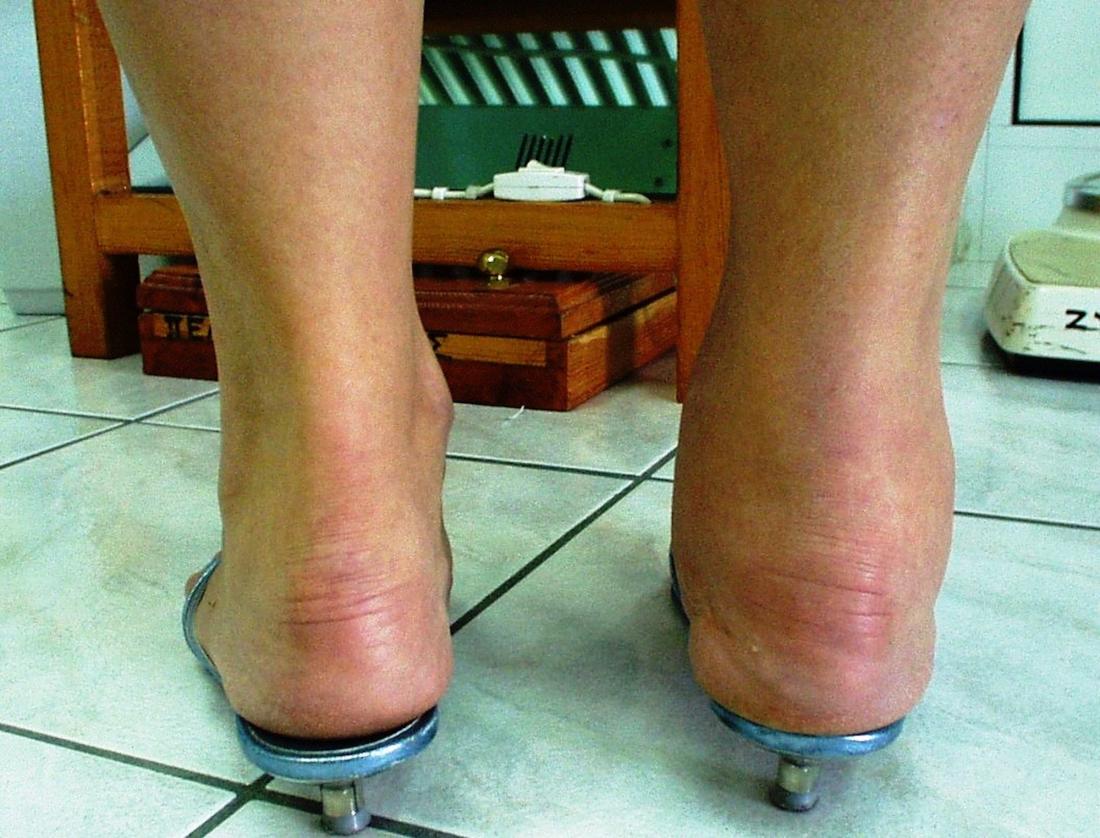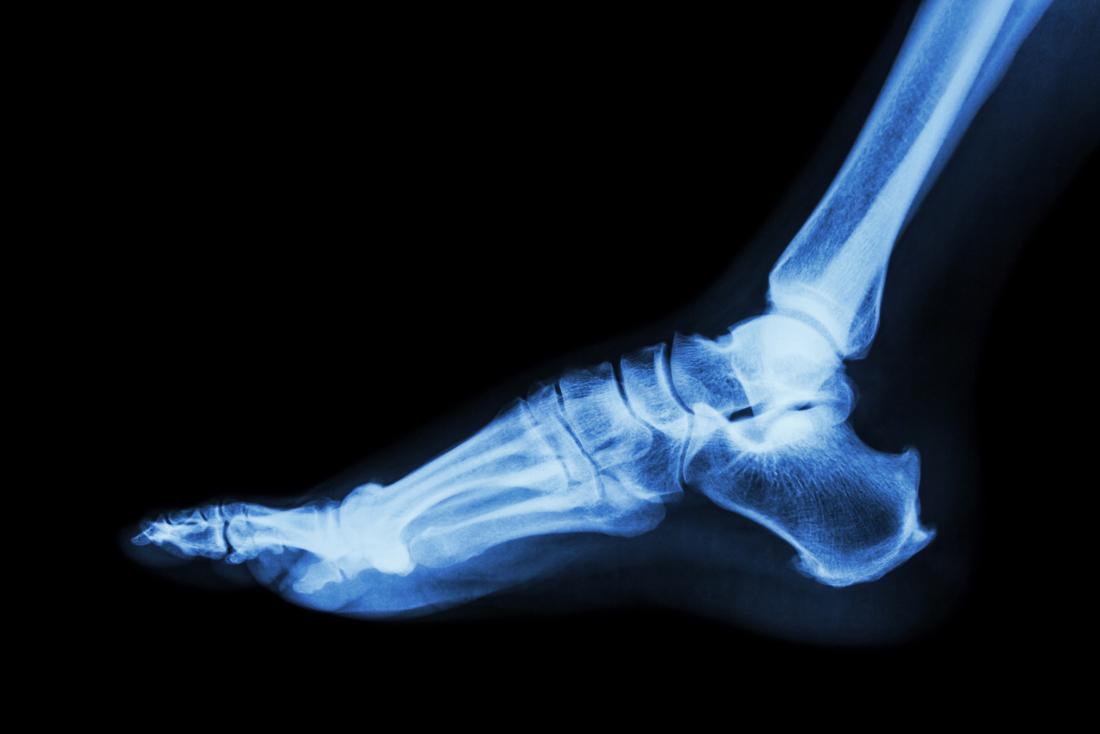Most often, rheumatoid arthritis or RA affects the hands and feet, but, less commonly, it can also affect the ankles.
The condition typically impacts on smaller joints first, such as the toe joints in the foot. It may then move to larger joints, such as the ankles. RA in the ankles can impede walking and cause considerable discomfort.
In this article, we take a close look at how RA affects the ankles, including the symptoms, and how people can relieve pain and swelling.
How does RA affect the ankles?

RA can cause inflammation in the ankle joints.
Image credit: ‘ιπλή, 2010
Symptoms of RA tend to come and go in cycles called flares that may last a few days or several weeks. People may notice their symptoms are worse in the morning or at night.
As it does in other joints, RA can cause inflammation and stiffness in the ankle joints as a result of long-term inflammation. Over time, the structure of the ankle joints can be affected, leading to permanent changes in the shape of the joints.
The ankle joint connects the bones of the leg to the foot. It is made up of two smaller joints that act as a hinge to move the foot. Movements, such as walking, rely on properly functioning ankle joints.
The bones in the ankle joint contain cartilage that protects them from rubbing against each other. RA causes this to break down over time, increasing the friction between the bones.
This friction between bones can produce inflammation around the ankle joint. The surrounding tissues that support the ankle may also be damaged, causing them to become weak and unstable and unable to support the joint fully.
In many cases, people with RA in the ankles also have other symptoms in their feet. Commonly affected areas are:
- the heel of the foot, particularly the Achilles tendon when nodules appear
- the middle of the foot and bones below the ankle (if the tendons and ligaments become lax, this can cause a flat foot)
- the front ball of the foot
- the toes
How does RA in the ankles feel?
The main symptom of RA in the ankle joint is inflammation, making the joint swollen, painful, and stiff. This can restrict the joint’s mobility, and impair a person’s ability to walk and stand.
In the early stages, symptoms may be mild and infrequent. For example, people may begin to feel discomfort when walking up a hill, as this places the ankle joints under extra pressure.
Over time, inflammation can become worse, causing damage to the joints and their surrounding tissues. Symptoms then become more pronounced. The ankles may frequently become painful and stiff, particularly when walking or standing.
In longstanding disease, the ankle joint can become fused and range of motion lost, which impacts gait significantly because the foot cannot flex to allow the necessary push off. However, due to developments in treatments, this is now rare.
When chronic RA causes changes to the structure of the foot, it can lead to callouses, bunions, nodules, and corns.
Aside from inflammation in the joints, other symptoms of RA may include:
Diagnosis

A doctor will recommend an X-ray to assess the extent of the joint damage.
Doctors can often diagnose RA with a physical examination. They will also visually inspect the ankles for signs of inflammation or other signs, and test their range of motion.
While doctors will diagnose RA mainly based on symptoms, they may also recommend other tests to look for finer details.
For example, doctors often recommend X-rays, ultrasound, or sometimes MRI scans to assess the extent and location of joint damage. This may be more likely when the doctor suspects RA in the ankle, as the early damage is less immediately obvious than in other areas.
Blood tests can help to determine whether antibodies in the blood indicate RA or rule out other conditions.
Treating RA in the ankles
The exact cause of RA is unknown. Researchers are still investigating the best treatments for the condition.
Treating RA can involve a combination of different methods, including exercises, adopting an anti-inflammatory diet, and using medication to reduce inflammation and pain.
Smoking is a known risk factor for developing RA and for symptoms worsening, so if a person quits smoking, they may benefit their long-term outlook.
Exercising the ankle joints

For a person with RA in the ankles, a physical therapist can create an exercise plan.
Keeping the ankle joints mobile throughout the day can improve flexibility and range of motion in the area.
Exercises can be designed to ensure the ankles stay mobile but without adding too much strain and causing further damage.
Strengthening the muscles around the joints can also reduce further damage by providing extra support.
People can try specific exercises that stretch and strengthen the ankle joints to reduce pain, stiffness, and swelling, including:
- exercises to strengthen the foot and ankle muscles to relieve pressure on the joints
- stretches to alleviate stiffness in the tissue surrounding the ankles
Physical therapists can create exercises plans that they tailor for the individual. People will need to find out what exercises are best for their needs.
Lifestyle changes
People may need to stop or limit activities that put too much strain on the ankles in some cases.
When walking, a person may need to use equipment that offers support, such as a cane or walking frame, to limit the impact on the ankles. Orthopedic shoes may also be beneficial.
Maintaining a healthy weight can help reduce discomfort. Being overweight can put additional strain on the ankle joints. A doctor may encourage a healthful, anti-inflammatory diet, or a new exercise routine.
Medication
Reducing inflammation is critical to enable a person to limit swelling in their ankles and manage their pain.
The following medications can help with the symptoms of RA and may reduce long-term damage in the joints:
- painkillers to manage uncomfortable symptoms
- nonsteroidal anti-inflammatory drugs (NSAIDs) to reduce inflammation
- disease-modifying anti-rheumatic drugs (DMARDs)
- biologics
Managing inflammation can help restore mobility in the ankle and other joints. If RA has caused permanent damage to the ankle joint, medication will not reverse this but may assist with pain, preventing further damage, and improving quality of life.
Doctors can also use corticosteroid injections into the ankle to quickly reduce severe inflammation to prevent damage or reduce pain.
People should be aware that they may be more likely to get infections if they take DMARDs and biologics, as these can suppress the immune system.
Surgery
People who have advanced forms of RA or do not respond sufficiently to treatment may require surgery.
What surgery doctors offer will depend on the type of arthritis and extent of the damage. Some surgeries involve fusing parts of bones in the ankle to prevent them from rubbing and causing inflammation and pain.
Ankle replacement surgery may be an option to reduce someone’s pain and restore their joint mobility in more severe cases, such as if fusion has not been effective.
Outlook
RA is a chronic condition. The symptoms usually start mild but can progress to produce significant discomfort and mobility issues. When RA affects the ankles, it can limit the ability to stand or walk properly.
However, a range of effective treatments is available, and a combination of treatments can help improve people’s quality of life during flares.
